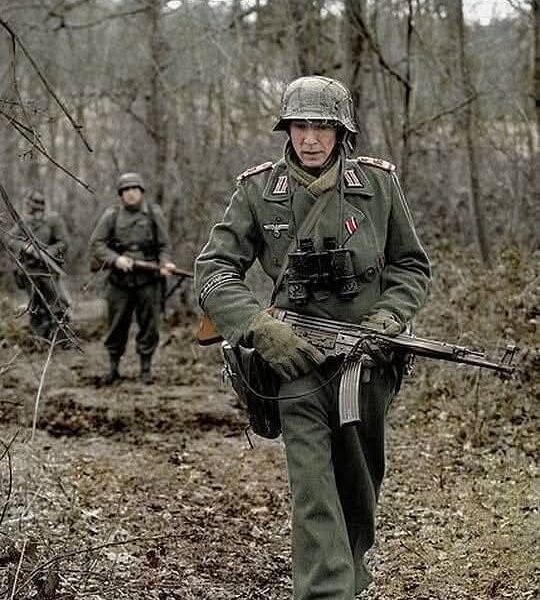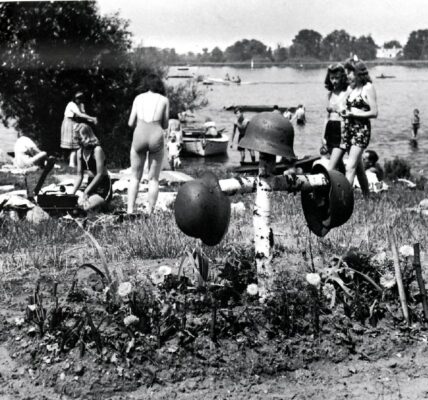Norway after liberation: Historical photos of German prisoners of war in Norway, 1945 _de3


The German occupation of Norway began on April 9, 1940, after German troops occupied the neutral Scandinavian country of Norway. It ended on May 8, 1945, after the surrender of German troops in Europe. During this entire period, Norway was continuously occupied by the Wehrmacht.
Civilian rule was de facto assumed by the Reichskommissariat Norwegen, which cooperated with a pro-German puppet government, while the Norwegian king and the legitimate government continued to operate in exile from London.
This period of military occupation is referred to in Norway as the “war years” or “occupation period.”
 |
| German prisoners of war are processed before embarking from Norway to Germany. Here, the prisoners rest at the embarkation camp in Mandal before boarding boats to Germany. |
 |
| German prisoners of war are examined at the Elverum camp before being shipped from Norway to Germany. Here, the prisoners repack their belongings after interrogations and searches. |
 |
| German prisoners of war are processed at the Elverum camp prior to their embarkation from Norway to Germany. Here, the prisoners prepare for the transfer to the embarkation camp in Mandal. |
 |
| Ruth Anderson, the only Norwegian woman who worked at Gestapo headquarters, is under arrest awaiting trial. |
 |
| German prisoners of war from the Elverum camp prepare to board the ship from Norway to Germany. Here, prisoners board boats in Mandal that will take them to Germany. |
 |
| German prisoners of war are examined at the Elverum camp before embarking from Norway to Germany. Here, prisoners are searched and all their belongings are searched. |
 |
| German prisoners of war from the Elverum camp prepare to board the ship from Norway to Germany. Here, a boat loaded with prisoners prepares to board the ship from Mandal to Germany. |
 |
| Storage room at Solar Airfield in Stavanger, where some of the estimated 30,000 rifles taken from the German forces in Norway after their surrender are kept. |
 |
| A collection of German military equipment, including artillery guns, searchlights, tanks, and trucks, at the Solar Airfield in Stavanger. |
 |
| A row of German 7.5 cm anti-tank guns at Solar Airfield in Stavanger. |
 |
| A row of Messerschmitt Bf 110 night fighters at Solar Airfield, Stavanger, Norway, 1945. |
 |
| An officer of a Highland Regiment inspects a German Molch (Salamander) one-man submarine at the Solar Airfield in Stavanger, Norway. |
 |
| A German prisoner clearing a minefield near Stavanger attaches a fuse to a Teller mine. These mines were too dangerous to move and were therefore detonated on the spot. |

|
| A German prisoner engaged in clearing a minefield near Stavanger searches for mines in a crater. |

|
| A German prisoner discovers an anti-personnel mine during mine clearance near Stavanger. |

|
| The explosion was caused by the detonation of German Tellermines during the clearance of a minefield near Stavanger |












